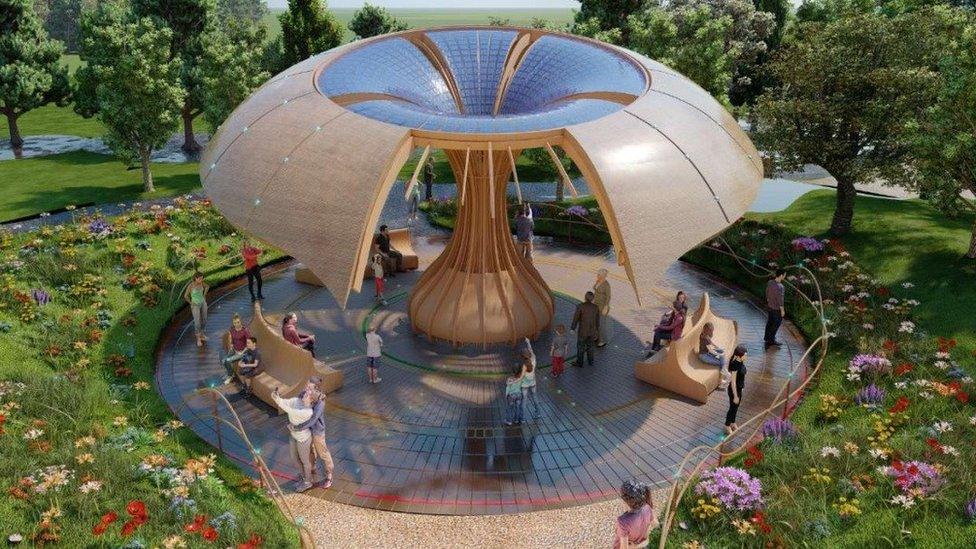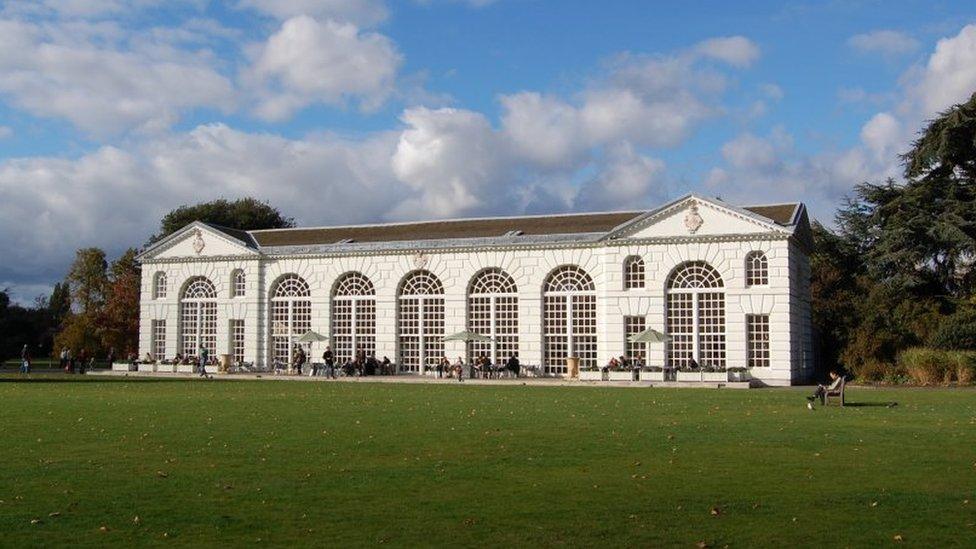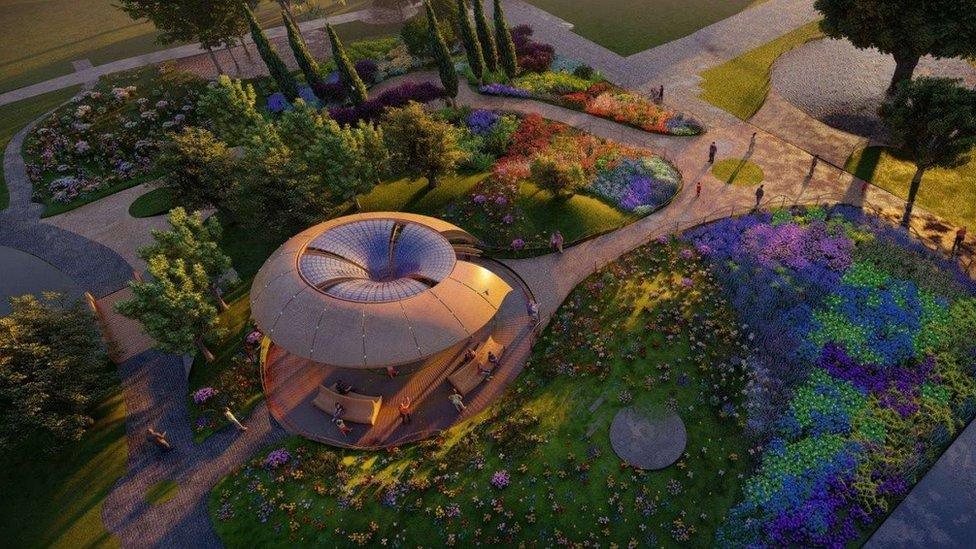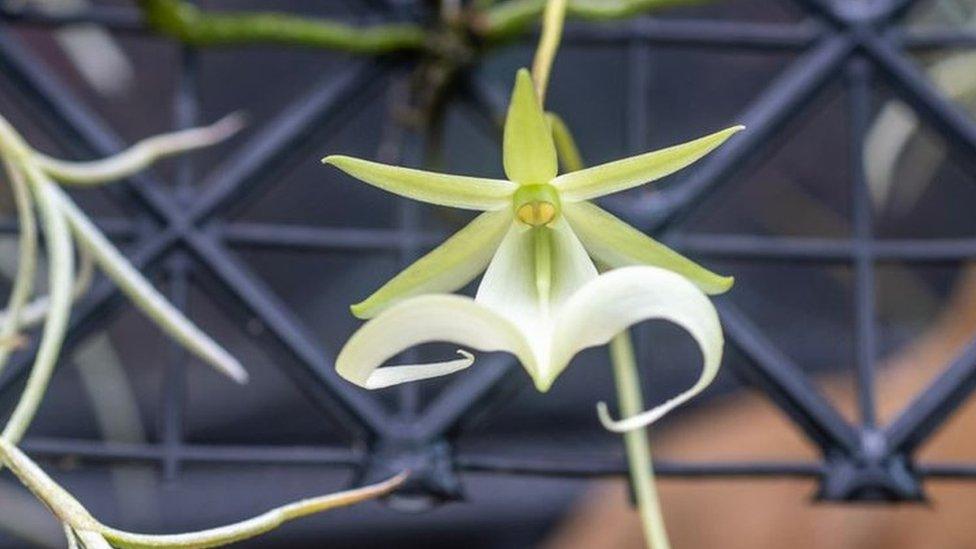Kew plans new carbon garden and orangery extension
- Published

Kew said a pavilion would be built in the centre of the new garden using sustainable materials
A new "carbon garden" and extended orangery terrace are among plans announced by the Royal Botanic Gardens at Kew in south-west London.
The new garden will replace the secluded garden which Kew says is unsafe due to its dilapidated features.
A report by Kew to Richmond Council says the works will improve visitor experience and focus on climate change challenges.
The council will make a decision on the proposals at a date to be confirmed.
A gravelled seating area will also be added as an extension to the Grade-I listed orangery under the proposals, but listed building consent is required for the project.

The orangery at Kew is currently used as a restaurant and events venue
Explaining its choice of location for the carbon garden, the report said: "The secluded garden was created over 30 years ago and many of its features are now dilapidated and, in some cases, unsafe."
Kew said plans for the garden included "beautiful planting" highlighting biodiversity in the wild, and a range of more than 25 climate-resilient trees.
It will also explain the role of carbon in nature, along with what can be done to reduce carbon emissions and improve its capture and storage.

Kew said the addition of the new garden will "improve the visitor and guest experience"
"The carbon garden will utilise this space much more effectively and introduce a beautiful, inspiring and insightful new garden for visitors to enjoy, and learn from," Kew said.
The report explains there will be a circular route through four main zones of the garden based on the themes of the carbon cycle, carbon and climate change, living with climate change and nature-based solutions.
A pavilion and seating will be built in the centre of the garden using sustainable materials.
Plants in each zone would reflect the different themes, including a dry garden with drought-tolerant plants and trees, a wildflower meadow of native species and a flower meadow.

Listen to the best of BBC Radio London on Sounds and follow BBC London on Facebook, external, X, external and Instagram, external. Send your story ideas to hellobbclondon@bbc.co.uk, external
- Published15 November 2023

- Published1 June 2023

- Published13 March 2023
